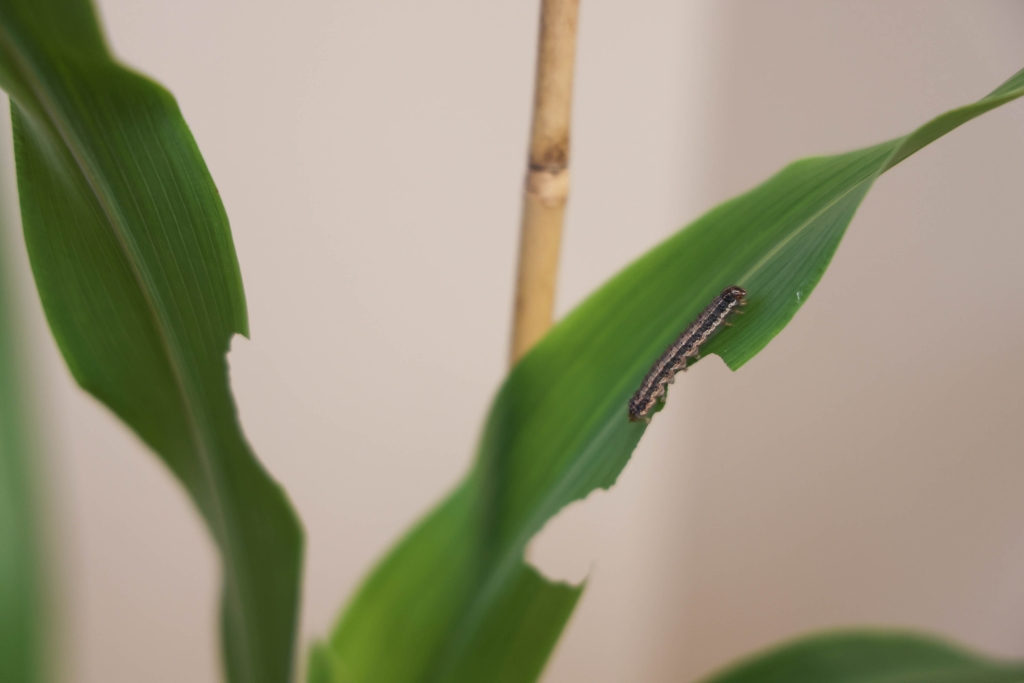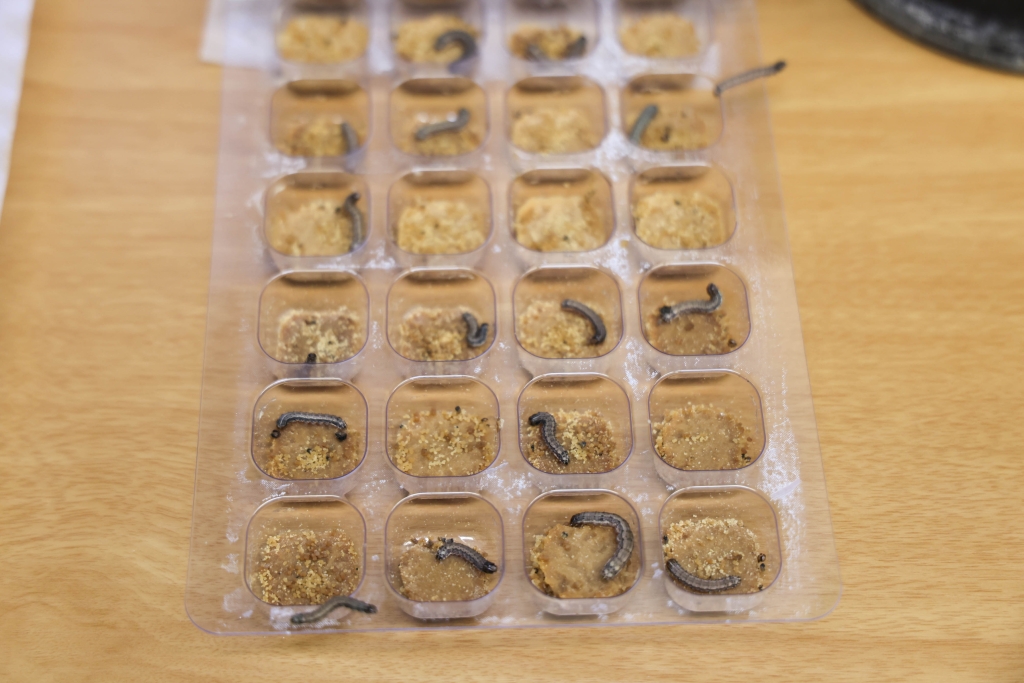Geitner Simmons, May 6, 2025
Husker research unlocks secrets of sorghum’s defenses against fall armyworm
University of Nebraska–Lincoln scientists continue to advance the understanding of sorghum’s natural defenses, new findings that can strengthen crop resistance to a major pest threat, the fall armyworm.
These voracious caterpillars harm a variety of crops, including corn and soybeans. Once the creatures begin feeding on plant stems or leaves, producers typically lose at least a quarter of their crop. Originally native to the Americas, this invasive pest has spread to Africa, Asia and other parts of the world, posing a major concern for food security and agricultural sustainability.
The fall armyworm larvae feed at nearly all stages of plant growth, spread rapidly and display increased resistance to pesticides. In response, the university’s Department of Entomology is conducting multidisciplinary, federally funded research in collaboration with the U.S. Department of Agriculture’s Agricultural Research Service, focusing on sorghum.
In the latest findings, Joe Louis, Harold W. Eberhard Professor of agricultural entomology, and colleagues identified how the sorghum gene Brown midrib 12 (Bmr12) encodes an enzyme, COMT, important to the plant’s natural defenses. The team recently published its findings in a paper for Plant Physiology.

Louis said that sorghum plants that overexpress Bmr12 increase their production of certain hormones and flavonoids — compounds known for their antioxidant properties and various biological activities — increasing disruption of fall armyworm growth and development.
“Findings from this study could be useful for other crops, such as corn and soybeans, and their specific modes of action to defend against insects,” Louis said.
A key will be identifying each crop’s specific flavonoids contributing to plant defense.
Sorghum’s natural defenses spring into action when activated by the fall armyworm’s oral secretions, with a higher level of Bmr12 leading to enhanced defense, activating COMT-dependent flavonoid resistance to fall armyworm.
The researchers combined two approaches to arrive at this conclusion: a look at which genes activate during instances such as insect attacks and an examination of which chemicals sorghum produces when under stress. In combination, the two approaches enabled Louis and his colleagues to better understand how fall armyworm attacks cause certain genes to activate and certain chemicals to be released for the plants to protect themselves.
This knowledge of Bmr12’s benefits opens the long-term potential for breeding or gene editing to create hybrids with stronger natural resistance.

The Bmr12 research is the most recent in a long line of sorghum-focused studies to better understand the crop’s natural defenses. A previous Nebraska study identified a key plant hormone that enhances sorghum’s natural ability to fight off the sugarcane aphid.
Key support for the research comes from two federal grants — $1.2 million from the Plant Biotic Interactions Program, a joint initiative of the USDA’s National Institute of Food and Agriculture and the National Science Foundation, and a $430,000 grant from NIFA’s Pests and Beneficial Species in Agricultural Production Systems. The $430,000 grant was awarded to Louis, and the $1.2 million grant was awarded to him and his research colleague, Scott Sattler, adjunct professor of agronomy and horticulture and research leader with the USDA-ARS Wheat, Sorghum and Forage Research Unit on UNL’s East Campus.
Pritha Kundu, a postdoctoral research associate in entomology, is the lead author of the new paper, and the second author is Sanket Shinde, a recent doctoral graduate from the department. Sajjan Grover, now a senior scientist at Bayer, contributed to the research during his past work as a postdoctoral research associate at Nebraska.
“Natural plant compounds like flavonoids could be used to help protect sorghum from fall armyworm and potentially other insect pests in a safer, non-toxic way,” Louis said.
From those research findings, possibilities arise for variety-specific follow-up studies and, potentially, the creation of hybrids with robust natural resistance.





